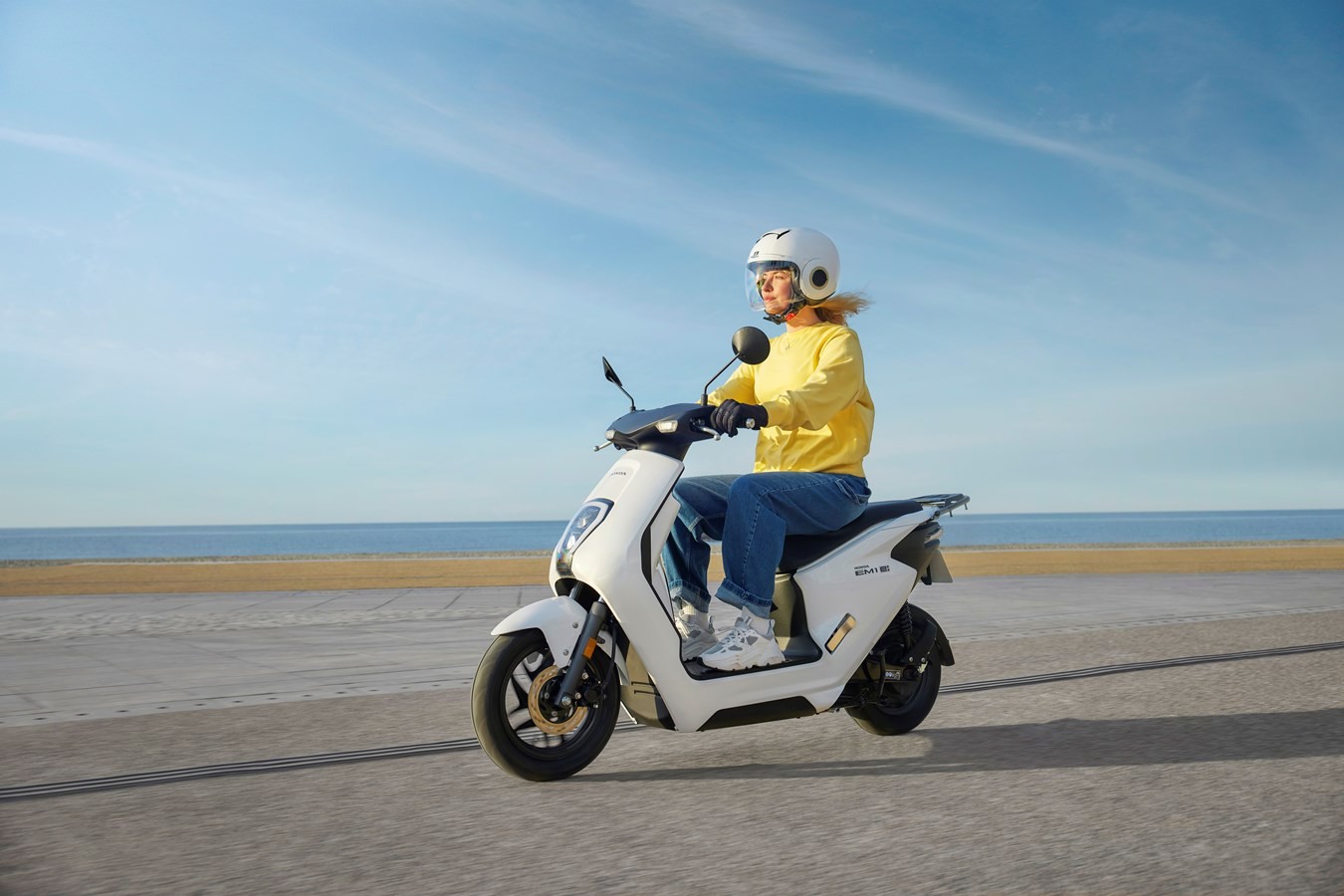Honda has decided to accelerate the electrification of its motorcycles (motorcycles and scooters). The Japanese manufacturer said it did revise upward the annual global electric motorcycle sales target for 2030, bringing it to 4 million units. That’s an increase of 500,000 units from what was announced a few months ago.
The Tokyo-based manufacturer has therefore updated its plans to electrify the two-wheeler sector. Let’s take a look at the most interesting news.
HONDA: 30 MODELS UNTIL 2030
This year, Honda started selling three new models, including the Honda “Cub e:” in China and the electric scooter “EM1e:” in Japan and Europe. The next novelty will arrive in 2024. The Japanese brand will indeed present a new electric scooter based on the “SC e: Concept” recently exhibited at the Japan Mobility Show 2023.
See also: India’s Luxury Car Market Shines in 2024 Despite Challenges
Subsequently, in 2025, new models were defined as “entertainment and electrical plug-ins “. In addition, Honda will introduce electric models in various categories such as supersport, naked, offroad, and quad, accelerating its initiatives to build a complete line-up. The aim is to introduce the overall more than 30 electric models by 2030. However, there are no concrete insights into the technical features at this time.
In its forthcoming electric models, Honda plans to integrate advanced connectivity features, facilitating Over-The-Air (OTA) updates for enhanced functionality and convenience. Embracing a modular platform approach, Honda aims to interchange batteries, power units, and chassis components, enabling versatile customization to cater to diverse customer preferences globally.
This strategic decision not only streamlines the introduction of various models but also ensures prompt adaptation to meet evolving market demands. Moreover, the modularization strategy promises cost efficiencies, optimizing production processes and resource utilization. By harnessing innovative technologies and flexible design frameworks, Honda remains committed to delivering cutting-edge electric vehicles that prioritize connectivity, performance, and affordability, reinforcing its position as a frontrunner in the automotive industry’s electrification journey.
In its pursuit of battery technology advancements, Honda is actively developing accumulators utilizing Lithium-Iron-Phosphate (LFP) cells, with plans for integration into its vehicles by 2025. Additionally, Honda is exploring the potential adoption of high-energy density batteries in the medium to long term. This includes considering the utilization of solid-state batteries, which are currently in the developmental phase.
By leveraging emerging battery technologies such as solid-state batteries, Honda aims to enhance the performance, range, and sustainability of its electric vehicles. This forward-looking approach underscores Honda’s commitment to innovation and its dedication to offering cutting-edge solutions that address the evolving needs of consumers while promoting environmental sustainability. Through continuous research and development initiatives, Honda strives to position itself at the forefront of the electric vehicle market, driving positive change in the automotive industry.
COST REDUCTION
In addition to battery advancements, Honda aims to halve the cost of electric motorcycles by 2030 compared to current models. This ambitious goal aligns with the brand’s commitment to making electric vehicles more accessible and affordable for consumers. By implementing cost-saving measures and leveraging technological innovations, Honda seeks to democratize electric mobility and accelerate the adoption of electric motorcycles worldwide. This strategic initiative underscores Honda’s dedication to sustainability and its vision of a future where electric vehicles play a prominent role in shaping a greener transportation landscape.
Honda will introduce plug-in models, optimize battery cells, increase purchasing and production efficiency by adopting common modules, and improve production efficiency through various measures such as production in factories focused on the production of electric models. Honda will initially use its existing infrastructure for internal combustion models. It will then use dedicated production facilities for electric motorcycles around the world around 2027. In the electrification of its motorcycles, Honda will invest 100 billion yen in the period 2021-2025 and another 400 billion yen in the 5 years from 2026 to 2030, for a total of approximately 500 billion yen (over 3.1 billion euros).


